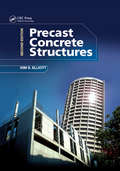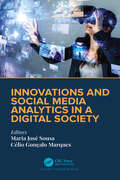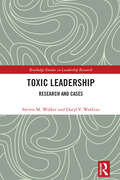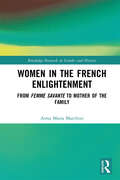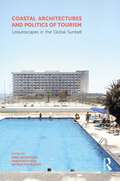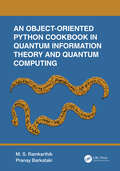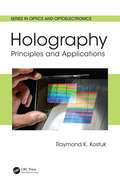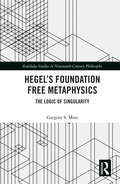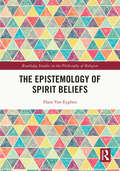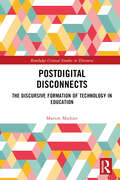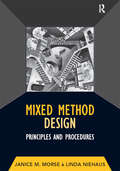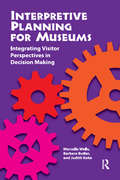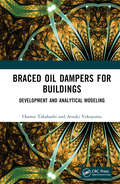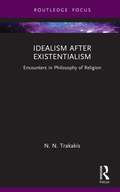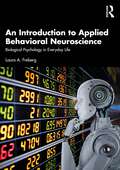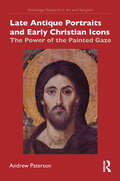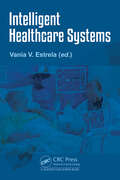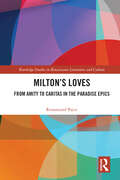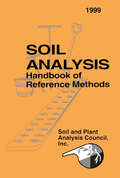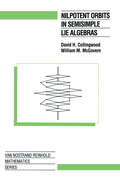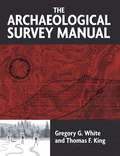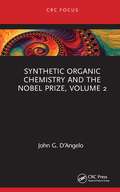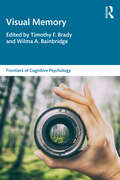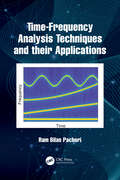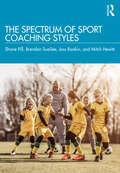- Table View
- List View
Precast Concrete Structures
by Kim S. ElliottThis second edition of Precast Concrete Structures introduces the conceptual design ideas for the prefabrication of concrete structures and presents a number of worked examples that translate designs from BS 8110 to Eurocode EC2, before going into the detail of the design, manufacture, and construction of precast concrete multi-storey buildings. Detailed structural analysis of precast concrete and its use is provided and some details are presented of recent precast skeletal frames of up to forty storeys.The theory is supported by numerous worked examples to Eurocodes and European Product Standards for precast reinforced and prestressed concrete elements, composite construction, joints and connections and frame stability, together with extensive specifications for precast concrete structures. The book is extensively illustrated with over 500 photographs and line drawings.
Innovations and Social Media Analytics in a Digital Society
by Maria José Sousa and Célio Gonçalo MarquesRecent advances in digitization are transforming healthcare, education, tourism, information technology, and some other sectors. Social media analytics are tools that can be used to measure innovation and the relation of the companies with the citizens. This book comprises state-ofthe-art social media analytics, and advanced innovation policies in the digitization of society. The number of applications that can be used to create and analyze social media analytics generates large amounts of data called big data, including measures of the use of the technologies to develop or to use new services to improve the quality of life of the citizens. Digitization has applications in fields from remote monitoring to smart sensors and other devices. Integration generates data that need to be analyzed and visualized in an easy and clear way, that will be some of the proposals of the researchers present in this book. This volume offers valuable insights to researchers on how to design innovative digital analytics systems and how to improve information delivery remotely.
Toxic Leadership: Research and Cases (Routledge Studies in Leadership Research)
by Steven M. Walker Daryl WatkinsToxic Leadership: Research and Cases presents research and cases on toxic leadership that emerged from qualitative research on the followers of toxic leaders. The goal is to help students, researchers, and academics understand how toxic leadership emerges, how leaders can spot toxic leadership within their organizations, and discuss what they can do to stop toxic leaders from destroying organizational value.The book pulls together various theories, models, and names (e.g., bad leadership, destructive leadership) for toxic leadership. The authors cover how power, culture, personality disorders, and followers contribute to the toxic leadership phenomenon. Readers will learn how toxic leaders impact organizations, the types of toxic leaders, signs of toxic leaders, and the environments they create. The authors share case studies for each toxic leader type to illustrate themes, coping strategies, and organizational outcomes. Each case is accompanied by a series of questions for reflection, study, and leadership development.This book will be useful for students, researchers, and academics to help uncover signs of toxic leaders that are often hidden from upper management. It will also be helpful for leaders to develop organizational strategies and for followers to develop coping strategies.
Women in the French Enlightenment: From Femme Savante to Mother of the Family (Routledge Research in Gender and History #47)
by Anna Maria MarchiniThis volume deals with philosophical, scientific, and ideological images of women during the French Enlightenment, examining their emergence in the reflections of the philosophes, in Catholic morality, in biological and medical knowledge, in novels, in periodicals, and in the law.Alongside the appeals for social and intellectual emancipation advanced by the femmes savantes, typical of the eighteenth-century salons, a new conception pertaining to women’s social role related to the affirmation of the bourgeoisie and of its model of the family took place. Codified in a more complex and organized way within the Rousseauian philosophy, this new conception spread in various cultural debates, gaining a real hegemony: women were meant to be excluded from any "public" space, devoid of cultural aspirations, and only devoted to satisfying the needs of the family.The book adopts a multidisciplinary, interdisciplinary, and synthetic approach and at the same time highlights the "roots" of some fundamental ways of considering women that are still active in present-day society. It also addresses researchers in the history of philosophy, sociology, literature, and gender studies, and readers with an interest in women’s issues.
Coastal Architectures and Politics of Tourism: Leisurescapes in the Global Sunbelt
by Sibel BozdoǧanThis volume offers a critical and complicated picture of how leisure tourism connected the world after the World War II, transforming coastal lands, traditional societies, and national economies in new ways.The 21 chapters in this book analyze selected case studies of architectures and landscapes around the world, contextualizing them within economic geographies of national development, the geopolitics of the Cold War, the legacies of colonialism, and the international dynamics of decolonization. Postwar leisure tourism evokes a rich array of architectural spaces and altered coastal landscapes, which is explored in this collection through discussions of tourism developments in the Mediterranean littoral, such as Greece, Turkey, and southern France, as well as compelling analyses of Soviet bloc seaside resorts along the Black Sea and Baltic coasts, and in beachscapes and tourism architectures of western and eastern hemispheres, from Southern California to Sri Lanka, South Korea, and Egypt. This collection makes a compelling argument that "leisurescapes," far from being supra-ideological and apolitical spatial expressions of modernization, development, and progress, have often concealed histories of conflict, violence, social inequalities, and environmental degradation. It will be of interest to architectural and urban historians, architects and planners, as well as urban geographers, economic and environmental historians.
An Object-Oriented Python Cookbook in Quantum Information Theory and Quantum Computing
by M.S. Ramkarthik Pranay BarkatakiThis first-of-a-kind textbook provides computational tools in state-of-the-art OOPs Python that are fundamental to quantum information, quantum computing, linear algebra and one-dimensional spin half condensed matter systems. Over 104 subroutines are included, and the codes are aided by mathematical comments to enhance clarity. Suitable for beginner and advanced readers alike, students and researchers will find this textbook to be a helpful guide and a compendium which they can readily use.Features Includes over 104 codes in OOPs Python, all of which can be used either as a standalone program or integrated with any other main program without any issues. Every parameter in the input, output and execution has been provided while keeping both beginner and advanced users in mind. The output of every program is explained thoroughly with detailed examples. Detailed mathematical commenting is done alongside the code which enhances clarity about the flow and working of the code.
Holography: Principles and Applications (Series in Optics and Optoelectronics #7233)
by Raymond K. KostukThis self-contained treatment of the principles, techniques, and applications of holography examines theory and practice, image analysis, specialized techniques, and a range of applications of both analog and digital holographic methods. The author, an esteemed professor in the field, describes the nature of holographic and lithographic diffraction gratings and the tools necessary for their design and analysis. Suitable for researchers and graduate students in physics and optics, the book includes exercise problems to enhance understanding. Features Offers a systematic, rigorous account of the principles, techniques, and applications of holography Draws on the experience and lectures of a well-known author and professor in the field Presents the theory and applications of both analog and digital holographic methods Includes exercise problems
Hegel’s Foundation Free Metaphysics: The Logic of Singularity (Routledge Studies in Nineteenth-Century Philosophy)
by Gregory S. MossWinner of the hegelpd–prize 2022Contemporary philosophical discourse has deeply problematized the possibility of absolute existence. Hegel’s Foundation Free Metaphysics demonstrates that by reading Hegel’s Doctrine of the Concept in his Science of Logic as a form of Absolute Dialetheism, Hegel’s logic of the concept can account for the possibility of absolute existence. Through a close examination of Hegel’s concept of self-referential universality in his Science of Logic, Moss demonstrates how Hegel’s concept of singularity is designed to solve a host of metaphysical and epistemic paradoxes central to this problematic. He illustrates how Hegel’s revolutionary account of universality, particularity, and singularity offers solutions to six problems that have plagued the history of Western philosophy: the problem of nihilism, the problem of instantiation, the problem of the missing difference, the problem of absolute empiricism, the problem of onto-theology, and the third man regress. Moss shows that Hegel’s affirmation and development of a revised ontological argument for God’s existence is designed to establish the necessity of absolute existence. By adopting a metaphysical reading of Richard Dien Winfield’s foundation free epistemology, Moss critically engages dominant readings and contemporary debates in Hegel scholarship. Hegel’s Foundation Free Metaphysics will appeal to scholars interested in Hegel, German Idealism, 19th- and 20th-century European philosophy, metaphysics, epistemology, and contemporary European thought.
The Epistemology of Spirit Beliefs (Routledge Studies in the Philosophy of Religion)
by Hans Van EyghenThis book assesses whether belief in spirits is epistemically justified. It presents two arguments in support of the existence of spirits and arguments that experiences of various sorts (perceptions, mediumship, possession and animistic experiences) can lend justification to spirit-beliefs.Most work in philosophy of religion exclusively deals with the existence of God or the epistemic status of belief in God. Spirit beliefs are often regarded as aberrations, and the falsity of such beliefs is often assumed. This book argues that various beliefs concerning spirits can be regarded as justified when they are rooted in experiences that are not defeated. It argues that spirit-beliefs are not defeated by recent theories put forth by neuroscientists, cognitive scientists or evolutionary biologists. Additional arguments are made that traditional theistic belief is epistemically linked to spirit beliefs and that unusual events can be explained in terms of spirit-activity. The book draws on theistic arguments, phenomenal conservatism and defenses of religious experiences to argue for the justification of spirit-beliefs.The arguments draw on examples from various religious traditions ranging from Christianity and Islam to Haitian Vodou and Tibetan Bon.The Epistemology of Spirit Beliefs will be of interest to researchers and advanced students working in philosophy of religion, religious epistemology, ethnography and cognitive neuroscience.
Postdigital Disconnects: The Discursive Formation of Technology in Education (Routledge Critical Studies in Discourse)
by Marion MathierThis book employs a critical discourse ethnographic approach to map the production of social meaning in digital media in education, drawing on insights from Switzerland to unpack the disconnects that arise in thinking postdigitally and ways forward for rethinking socio-cultural approaches.Grounded in Foucault-influenced, linguistically-oriented discourse studies, the book calls attention to the ways in which educational discourse has increasingly promoted digital media as a means of justifying curriculum change. Using data from policy documents, participant observation, and interviews, Mathier charts how this rhetoric manifests itself in the combination of top-down policies, on-the-ground implementation, and the lived experiences of students outside the classroom, and, in turn, surfaces broader disconnects. The volume explores how digital education is increasingly shaped by platform capitalism, how young people’s experiences are disregarded in formal knowledge production, and how the prevalence of digital teaching and learning contributes to issues of access and inequality. Through a critical discursive approach, Mathier demonstrates the need for literacy practices in postdigital education to interrogate the ways in which digital media and education are entangled in larger socio-political practices.This book will appeal to students and scholars in critical discourse studies, critical literacy studies, digital communication, education research, and linguistic ethnography.
Mixed Method Design: Principles and Procedures (ISSN)
by Janice M MorseThe use of mixed methods designs for conducting research has become a major trend in social science research. Renowned methodological experts Janice Morse and Linda Niehaus present a guide to intermediate and experienced researchers on the possibilities inherent in mixed method research. They offer the basic principles of conducting this kind of study, then examine a wide variety of design options available to the researcher, including their strengths and weaknesses and when to use them. Providing examples from a variety of disciplines, examining potential threats to validity, and showing the relationship between method and theory, the book will be a valuable addition to the methodologist’s library and a useful text in courses in research design.
Interpretive Planning for Museums: Integrating Visitor Perspectives in Decision Making
by Marcella Wells Barbara H Butler Judith KokeMuseum professionals' increased focus on visitors in recent years has been demonstrated by, among other things, the enhanced practice of evaluation and the development of interpretive plans. Yet too often, these efforts function independent of one another. This book helps museums integrate visitors' perspectives into interpretive planning by recognizing, defining, and recording desired visitor outcomes throughout the process. The integration of visitor studies in the practice of interpretive planning is also based on the belief that the greater our understanding, tracking, and monitoring of learners, the greater the impact museums will make on public understanding of the science and humanities disciplines. An approach that advocates thoughtful and intentional interpretive planning that constantly integrates visitor perspectives is the next step in working with, rather than for, our communities; a step toward truly becoming visitor-centered and impactful as essential learning institutions of the 21st century.
Braced Oil Dampers for Buildings: Development and Analytical Modeling
by Osamu Takahashi Atsuki YokoyamaThe high damping force of oil damper vibration control systems in buildingsoffers relative safety during earthquakes and at a low environmentalcost. The oil damper is connected using braces in series and is installed withpins to the building structure, which minimizes the impact on the buildingstructure and allows installation and removal with ease.This is the first book detailing experimental work and cases of the use ofoil dampers in buildings. It shows their effectiveness by detailing the testingand analysis of buildings with them placed at braced positions, exposed tosmall amplitude vibration, and without them.• The only comprehensive presentation of oil damper vibration control• Covers analysis and design, with case studies and details of testingand experimental resultsThe book is organized systematically to suit students and junior professionalsin structural design as well as more specialist engineers. An additionalPython code sample is available online for learning the behaviors of oildampers (Jupyter Notebook environment required).Osamu Takahashi is a professor at Tokyo University of Science, founderof Science Kozo Inc., and an advisor to the New International StructuralDesign & Engineering Challenge Association, in Japan.Atsuki Yokoyama works in the Research and Development Departmentof Sanwa Tekki Corporation and has a PhD in Engineering from TokyoUniversity of Science.
Idealism after Existentialism: Encounters in Philosophy of Religion (Routledge Focus on Philosophy)
by N. N. TrakakisA century ago the dominant philosophical outlook was not some form of materialism or naturalism, but idealism. However, this way of thinking about reality fell out of favour in the Anglo-American analytic tradition as well as the Continental schools of the twentieth century.The aim of this book is to restage and reassess the encounter between idealism and contemporary philosophy. The idealist side will be represented by the great figures of the 19th-century post-Kantian tradition in Germany, from Fichte and Schelling to Hegel, followed by the towering Hegelians in Britain led by T. H. Green, F. H. Bradley and Bernard Bosanquet. Their twentieth-century adversaries will be represented by the secular existentialists, especially the famous French trio of Sartre, Beauvoir and Camus, who sought to follow Nietzsche in philosophizing in light of the death of God. And the arena of encounter will be the philosophy of religion—more specifically, questions relating to the nature and existence of God, death and the meaning of life, and the problem of evil. The book argues that the existentialist critique of idealism enables an innovative as well as a more critical and adventurous approach that is sorely needed in philosophy of religion today.Idealism after Existentialism will be of interest to scholars and advanced students working in the history of ninteenth- and twentieth-century philosophy and philosophy of religion.
An Introduction to Applied Behavioral Neuroscience: Biological Psychology in Everyday Life
by Laura A. FrebergAn Introduction to Applied Behavioral Neuroscience explores the connection between neuroscience and multiple domains, including psychological disorders, forensics, education, consumer behavior, economics, leadership, health, and robotics and artificial intelligence. The book ensures students have a solid foundation in the history of behavioral neuroscience; its applicability to other facets of science and policy, and a good understanding of major methodologies and their limitations to aiding critical thinking skills. Written in a student-friendly style, it provides a highly accessible introduction to the major structural and functional features of the human nervous system. It then discusses applications across a variety of areas in society, including how behavioral neuroscience is used by the legal system, in educational practice, advertising, economics, leadership, the development of and recovery from health challenges, and in robotics. Each of the application-specific chapters present the problems that neuroscience is being asked to address, the methods being used, and the challenges and successes experienced by scholars and practitioners in each domain. It is a must-read for all advanced undergraduate and postgraduate students in biological psychology, neuroscience, and clinical psychology who want to know what neuroscience can really do to address real-world problems.
Late Antique Portraits and Early Christian Icons: The Power of the Painted Gaze (Routledge Research in Art and Religion)
by Andrew PatersonThis book focuses on the earliest surviving Christian icons, dated to the sixth and seventh centuries, which bear many resemblances to three other well-established genres of ‘sacred portrait’ also produced during late antiquity, namely Roman imperial portraiture, Graeco-Egyptian funerary portraiture and panel paintings depicting non-Christian deities.Andrew Paterson addresses two fundamental questions about devotional portraiture – both Christian and non-Christian – in the late antique period. Firstly, how did artists visualise and construct these images of divine or sanctified figures? And secondly, how did their intended viewers look at, respond to, and even interact with these images? Paterson argues that a key factor of many of these portrait images is the emphasis given to the depicted gaze, which invites an intensified form of personal encounter with the portrait’s subject.The book will be of interest to scholars working in art history, theology, religion and classical studies.
Intelligent Healthcare Systems
by Vania V. EstrelaThe book sheds light on medical cyber-physical systems while addressing image processing, microscopy, security, biomedical imaging, automation, robotics, network layers’ issues, software design, and biometrics, among other areas. Hence, solving the dimensionality conundrum caused by the necessity to balance data acquisition, image modalities, different resolutions, dissimilar picture representations, subspace decompositions, compressed sensing, and communications constraints. Lighter computational implementations can circumvent the heavy computational burden of healthcare processing applications. Soft computing, metaheuristic, and deep learning ascend as potential solutions to efficient super-resolution deployment. The amount of multi-resolution and multi-modal images has been augmenting the need for more efficient and intelligent analyses, e.g., computer-aided diagnosis via computational intelligence techniques. This book consolidates the work on artificial intelligence methods and clever design paradigms for healthcare to foster research and implementations in many domains. It will serve researchers, technology professionals, academia, and students working in the area of the latest advances and upcoming technologies employing smart systems’ design practices and computational intelligence tactics for medical usage. The book explores deep learning practices within particularly difficult computational types of health problems. It aspires to provide an assortment of novel research works that focuses on the broad challenges of designing better healthcare services.
Milton's Loves: From Amity to Caritas in the Paradise Epics (Routledge Studies in Renaissance Literature and Culture)
by Rosamund PaiceThis book is about the multiple loves of Paradise Lost and Paradise Regained: sanctioned loves and outlawed loves, sincere loves and false loves, Christian loves, classical loves, humanist loves, and love as emotion. In showing how these loves motivate the most significant actions of the Paradise epics, it reveals Milton to have made creative use of the tensions between philosophical ideals, social conventions, and the rather messier ways in which love emerges in practice. Love, so central to Milton’s view of Edenic joy and obedience to God, unsettles earthly and heavenly communities and is the origin of Miltonic transgression. Milton’s Loves sheds new light on some of the most prominent concerns of Milton scholarship, including why Milton’s God is so difficult for readers to connect to, Satan’s apparent heroism, Milton’s radical theology, and the nature of Milton’s muse. It is a book that will appeal to students and scholars of Milton and early modern studies more broadly and is structured in a way that will aid easy reference.
Soil Analysis Handbook of Reference Methods
by Soil and Soil and Plant Analysis Council Inc.For more than 30 years, soil testing has been widely used as a basis for determining lime and fertilizer needs. Today, a number of procedures are used for determining everything from soil pH and lime requirement, to the level of extractable nutrient elements. And as the number of cropped fields being tested increases, more and more farmers and growers will come to rely on soil test results. But if soil testing is to be an effective means of evaluating the fertility status of soils, standardization of methodology is essential. No single test is appropriate for all soils.Soil Analysis Handbook of Reference Methods is a standard laboratory technique manual for the most commonly used soil analysis procedures. First published in 1974, this Handbook has changed over the years to reflect evolving needs. New test methods and modifications have been added, as well as new sections on nitrate, heavy metals, and quality assurance plans for agricultural testing laboratories. Compiled by the Soil and Plant Analysis Council, this latest edition of Soil Analysis Handbook of Reference Methods also addresses the major methods for managing plant nutrition currently in use in the United States and other parts of the world. For soil scientists, farmers, growers, or anyone with an interest in the environment, this reference will prove an invaluable guide to standard methods for soil testing well into the future.Features
Nilpotent Orbits In Semisimple Lie Algebra: An Introduction
by William.M. McGovernThrough the 1990s, a circle of ideas emerged relating three very different kinds of objects associated to a complex semisimple Lie algebra: nilpotent orbits, representations of a Weyl group, and primitive ideals in an enveloping algebra. The principal aim of this book is to collect together the important results concerning the classification and properties of nilpotent orbits, beginning from the common ground of basic structure theory. The techniques used are elementary and in the toolkit of any graduate student interested in the harmonic analysis of representation theory of Lie groups. The book develops the Dynkin-Konstant and Bala-Carter classifications of complex nilpotent orbits, derives the Lusztig-Spaltenstein theory of induction of nilpotent orbits, discusses basic topological questions, and classifies real nilpotent orbits. The classical algebras are emphasized throughout; here the theory can be simplified by using the combinatorics of partitions and tableaux. The authors conclude with a survey of advanced topics related to the above circle of ideas. This book is the product of a two-quarter course taught at the University of Washington.
The Archaeological Survey Manual
by Gregory G White Thomas F KingGovernmental guidelines have forced a dramatic change in the practice of archaeological surveying in recent decades. In response to public and private development, surveying is needed to accurately inventory the cultural resources of a region and provide guidance for their preservation and management. Greg White and Tom King provide a handy introduction to students, field novices, and land managers on the strategies, methods, and logic of contemporary survey work. In addition to providing the legal and historical context for this endeavor the book provides a heavily illustrated, practical guide to conducting a survey to help beginners understand how it works in practice. This volume is perfect for an archaeological methods class, field school, or reference collection.
Synthetic Organic Chemistry and the Nobel Prize, Volume 2 (Synthetic Organic Chemistry and the Nobel Prize)
by John G. D'AngeloThe Nobel Prize is the highest award in science, as is the case with nonscience fields too, and it is, therefore, arguably the most internationally recognized award in the world. This unique set of volumes focuses on summarizing the Nobel Prize within organic chemistry, as well as the specializations within this specialty. Any reader researching the history of the field of organic chemistry will be interested in this work. Furthermore, it serves as an outstanding resource for providing a better understanding of the circumstances that led to these amazing discoveries and what has happened as a result, in the years since.
Visual Memory (Frontiers of Cognitive Psychology)
by Timothy F. Brady and Wilma A. BainbridgeFeaturing contributions from world-leading researchers, this book explores the relationship between visual perception and memory. It bridges the traditionally separate fields of vision science and recognition memory and deals with an interdisciplinary set of perspectives combining research in psychology, neuroscience, and artificial intelligence.The book makes new connections between the wealth of research from each respective field, developing the idea that visuospatial memory is our best memory system. This volume traverses topics grounded in both empirical study and real-world applications, including working (short-term) memory, long-term memory, the neuroscience of memory, development of memory over the lifespan, autobiographical memories, false memories, and eyewitness testimony. It argues that an increased knowledge of how visuospatial memory works can lead to an improved understanding of the basic features of memory, as well as providing strategies for memory improvement. The book features cutting edge visual memory research, where converging methods in psychophysics, cognitive neuroscience, and computational modeling have been propelling the field forward. Visual Memory is an essential read for all students and researchers of memory and visual perception. It will also be useful for researchers and students in related fields including human-computer interaction, data visualization, cognitive science, and cognitive enhancement.
Time-Frequency Analysis Techniques and their Applications
by Ram Bilas PachoriMost of the real-life signals are non-stationary in nature. The examples of such signals include biomedical signals, communication signals, speech, earthquake signals, vibration signals, etc. Time-frequency analysis plays an important role for extracting the meaningful information from these signals. The book presents time-frequency analysis methods together with their various applications. The basic concepts of signals and different ways of representing signals have been provided. The various time-frequency analysis techniques namely, short-time Fourier transform, wavelet transform, quadratic time-frequency transforms, advanced wavelet transforms, and adaptive time-frequency transforms have been explained. The fundamentals related to these methods are included. The various examples have been included in the book to explain the presented concepts effectively. The recently developed time-frequency analysis techniques such as, Fourier-Bessel series expansion-based methods, synchrosqueezed wavelet transform, tunable-Q wavelet transform, iterative eigenvalue decomposition of Hankel matrix, variational mode decomposition, Fourier decomposition method, etc. have been explained in the book. The numerous applications of time-frequency analysis techniques in various research areas have been demonstrated. This book covers basic concepts of signals, time-frequency analysis, and various conventional and advanced time-frequency analysis methods along with their applications. The set of problems included in the book will be helpful to gain an expertise in time-frequency analysis. The material presented in this book will be useful for students, academicians, and researchers to understand the fundamentals and applications related to time-frequency analysis.
The Spectrum of Sport Coaching Styles
by Shane Pill Brendan SueSee Joss Rankin Mitch HewittFor the first time, this book applies The Spectrum to sports coaching to become a Spectrum of Coaching Styles. The non-versus approach to pedagogy taken by The Spectrum places athletes or players at the centre of their learning and clearly defines who (player or coach) is making pedagogical decisions in each style. This clarity allows players and coaches to have their teaching behaviours and decision-making clearly defined, and it provides a common language for players, coaches and practitioners to talk about coaching styles and the expected outcomes. For coaches interested in the holistic development of the player/athlete, The Spectrum provides a detailed framework for achieving multiple learning outcomes through cognitive, social, physical, ethical, emotional and social development.Written by coaches for coaches, this book applies Spectrum theory in a coach-specific/friendly way to the following: Introduction to The Spectrum and the sport coach as educator; Summary and detailed description of the 11 coaching styles and their suitability to particular types of coaching episodes; Outlines of the strengths of each style with application examples; and Explanations of coaching to develop reflective practice, self-analysis and error correction, how to coach players to decide on appropriate practice levels or challenge points, player problem solving and solution generation ability. The Spectrum of Sport Coaching Styles is important reading for coaches, athletes, students and lecturers of sports coaching across any sport.
